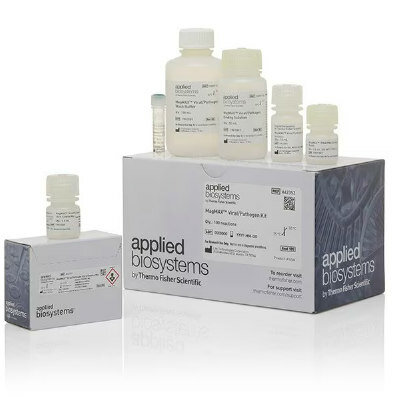Rapid Antigen Tests Detect Omicron, Delta SARS-CoV-2 Variants
|
By LabMedica International staff writers Posted on 17 Oct 2022 |

Accurate and accessible testing for SARS-CoV-2 is a critical tool for the timely identification of infection to inform isolation recommendations, prevent transmission, and facilitate early initiation of therapy to reduce disease progression.
Rapid antigen tests for COVID-19 show great promise as a testing method that is easy to use, accessible, and cost-effective Rapid antigen tests (Ag-RDTs) have lower sensitivity than RT-PCR tests for detecting SARS-CoV-2, however, sensitivity can be improved through serial testing.
A large team of medical scientists at the University of Massachusetts Chan Medical School, Worcester, MA, USA) compared the performance of Ag-RDTs in detecting the Delta (B.1.617.2) and Omicron (B.1.1.529) variants of SARS-CoV-2. The team relied on data from the prospective cohort study Test Us At Home in which participants serially took both at-home antigen and send-in PCR COVID-19 tests over a period of 10 to 15 days. This analysis focuses on the 5,779 individuals who tested negative for SARS-CoV-2 at the start of the parent study and the 207 individuals of those who later tested positive for the virus by PCR.
On enrollment, participants were assigned to 1 of 3 Ag-RDTs with emergency use authorization: BD Veritor At-Home COVID-19 Test (Becton, Dickinson and Company, San Diego, CA, USA), Quidel QuickVue At-Home OTC COVID-19 Test (San Diego, CA, USA) and Abbott BinaxNOW COVID-19 Antigen Self-Test (Princeton, NJ, USA). Participants received the Ag-RDT and the Quest Diagnostics collection kit for COVID-19 by mail at the shipping address provided on enrollment.
The investigators reported that a total of 207 participants were positive on RT-PCR (58 Delta, 149 Omicron). Differences in sensitivity between variants were not statistically significant (same day: Delta, 15.5% [95% CI, 6.2% to 24.8%] versus Omicron, 22.1% [CI, 15.5% to 28.8%]; at 48 hours: Delta, 44.8% [CI, 32.0% to 57.6%] versus Omicron, 49.7% [CI, 41.6% to 57.6%]). Among 109 participants who had RT-PCR–positive results for 48 hours, rapid antigen sensitivity did not differ significantly between Delta- and Omicron-infected participants (48-hour sensitivity: Delta, 81.5% [CI, 66.8% to 96.1%] versus Omicron, 78.0% [CI, 69.1% to 87.0%]). Only 7.2% of the 69 participants with RT-PCR–positive results for shorter than 48 hours tested positive by Ag-RDT within one week; those with Delta infections remained consistently negative on Ag-RDTs.
The authors concluded that nasal swab Ag-RDT performance was similar between the Omicron and Delta variants. In both cases, detection of virus with Ag-RDTs was associated with relative viral load as measured by Ct value. The data suggest that serial testing continues to be important in improving the performance of Ag-RDTs. Future work to increase the understanding of persons with singleton RT-PCR positivity is needed to determine the public health significance of a false-negative Ag-RDT result in this subpopulation. The study was published on October 11, 2022 in the journal Annals of Internal Medicine.
Related Links:
University of Massachusetts Chan Medical School
Becton, Dickinson and Company
Quidel
Abbott
Latest COVID-19 News
- New Immunosensor Paves Way to Rapid POC Testing for COVID-19 and Emerging Infectious Diseases
- Long COVID Etiologies Found in Acute Infection Blood Samples
- Novel Device Detects COVID-19 Antibodies in Five Minutes
- CRISPR-Powered COVID-19 Test Detects SARS-CoV-2 in 30 Minutes Using Gene Scissors
- Gut Microbiome Dysbiosis Linked to COVID-19
- Novel SARS CoV-2 Rapid Antigen Test Validated for Diagnostic Accuracy
- New COVID + Flu + R.S.V. Test to Help Prepare for `Tripledemic`
- AI Takes Guesswork Out Of Lateral Flow Testing
- Fastest Ever SARS-CoV-2 Antigen Test Designed for Non-Invasive COVID-19 Testing in Any Setting
- Health Care Professionals Showed Increased Interest in POC Technologies During Pandemic, Finds Study
- Set Up Reserve Lab Capacity Now for Faster Response to Next Pandemic, Say Researchers
- Blood Test Performed During Initial Infection Predicts Long COVID Risk
- Low-Cost COVID-19 Testing Platform Combines Sensitivity of PCR and Speed of Antigen Tests
- Finger-Prick Blood Test Identifies Immunity to COVID-19
- Quick Test Kit Determines Immunity Against COVID-19 and Its Variants
- Siemens Launches New Combination Tests for SARS-CoV-2 and Seasonal Respiratory Pathogens
Channels
Clinical Chemistry
view channel
3D Printed Point-Of-Care Mass Spectrometer Outperforms State-Of-The-Art Models
Mass spectrometry is a precise technique for identifying the chemical components of a sample and has significant potential for monitoring chronic illness health states, such as measuring hormone levels... Read more.jpg)
POC Biomedical Test Spins Water Droplet Using Sound Waves for Cancer Detection
Exosomes, tiny cellular bioparticles carrying a specific set of proteins, lipids, and genetic materials, play a crucial role in cell communication and hold promise for non-invasive diagnostics.... Read more
Highly Reliable Cell-Based Assay Enables Accurate Diagnosis of Endocrine Diseases
The conventional methods for measuring free cortisol, the body's stress hormone, from blood or saliva are quite demanding and require sample processing. The most common method, therefore, involves collecting... Read moreMolecular Diagnostics
view channel
Unique Autoantibody Signature to Help Diagnose Multiple Sclerosis Years before Symptom Onset
Autoimmune diseases such as multiple sclerosis (MS) are thought to occur partly due to unusual immune responses to common infections. Early MS symptoms, including dizziness, spasms, and fatigue, often... Read more
Blood Test Could Detect HPV-Associated Cancers 10 Years before Clinical Diagnosis
Human papilloma virus (HPV) is known to cause various cancers, including those of the genitals, anus, mouth, throat, and cervix. HPV-associated oropharyngeal cancer (HPV+OPSCC) is the most common HPV-associated... Read moreHematology
view channel
Next Generation Instrument Screens for Hemoglobin Disorders in Newborns
Hemoglobinopathies, the most widespread inherited conditions globally, affect about 7% of the population as carriers, with 2.7% of newborns being born with these conditions. The spectrum of clinical manifestations... Read more
First 4-in-1 Nucleic Acid Test for Arbovirus Screening to Reduce Risk of Transfusion-Transmitted Infections
Arboviruses represent an emerging global health threat, exacerbated by climate change and increased international travel that is facilitating their spread across new regions. Chikungunya, dengue, West... Read more
POC Finger-Prick Blood Test Determines Risk of Neutropenic Sepsis in Patients Undergoing Chemotherapy
Neutropenia, a decrease in neutrophils (a type of white blood cell crucial for fighting infections), is a frequent side effect of certain cancer treatments. This condition elevates the risk of infections,... Read more
First Affordable and Rapid Test for Beta Thalassemia Demonstrates 99% Diagnostic Accuracy
Hemoglobin disorders rank as some of the most prevalent monogenic diseases globally. Among various hemoglobin disorders, beta thalassemia, a hereditary blood disorder, affects about 1.5% of the world's... Read moreImmunology
view channel
Diagnostic Blood Test for Cellular Rejection after Organ Transplant Could Replace Surgical Biopsies
Transplanted organs constantly face the risk of being rejected by the recipient's immune system which differentiates self from non-self using T cells and B cells. T cells are commonly associated with acute... Read more
AI Tool Precisely Matches Cancer Drugs to Patients Using Information from Each Tumor Cell
Current strategies for matching cancer patients with specific treatments often depend on bulk sequencing of tumor DNA and RNA, which provides an average profile from all cells within a tumor sample.... Read more
Genetic Testing Combined With Personalized Drug Screening On Tumor Samples to Revolutionize Cancer Treatment
Cancer treatment typically adheres to a standard of care—established, statistically validated regimens that are effective for the majority of patients. However, the disease’s inherent variability means... Read moreMicrobiology
view channel
Mouth Bacteria Test Could Predict Colon Cancer Progression
Colon cancer, a relatively common but challenging disease to diagnose, requires confirmation through a colonoscopy or surgery. Recently, there has been a worrying increase in colon cancer rates among younger... Read more.jpg)
Unique Metabolic Signature Could Enable Sepsis Diagnosis within One Hour of Blood Collection
Sepsis is a life-threatening condition triggered by an extreme response of the body to an infection. It requires immediate medical intervention to prevent potential death or lasting damage.... Read morePathology
view channel
Spatial Tissue Analysis Identifies Patterns Associated With Ovarian Cancer Relapse
High-grade serous ovarian carcinoma is the most lethal type of ovarian cancer, and it poses significant detection challenges. Typically, patients initially respond to surgery and chemotherapy, but the... Read more.jpg)
Unique Hand-Warming Technology Supports High-Quality Fingertip Blood Sample Collection
Warming the hand is an effective way to facilitate blood collection from a fingertip, yet off-the-shelf solutions often do not fulfill laboratory requirements. Now, a unique hand-warming technology has... Read moreTechnology
view channel
New Diagnostic System Achieves PCR Testing Accuracy
While PCR tests are the gold standard of accuracy for virology testing, they come with limitations such as complexity, the need for skilled lab operators, and longer result times. They also require complex... Read more
DNA Biosensor Enables Early Diagnosis of Cervical Cancer
Molybdenum disulfide (MoS2), recognized for its potential to form two-dimensional nanosheets like graphene, is a material that's increasingly catching the eye of the scientific community.... Read more
Self-Heating Microfluidic Devices Can Detect Diseases in Tiny Blood or Fluid Samples
Microfluidics, which are miniature devices that control the flow of liquids and facilitate chemical reactions, play a key role in disease detection from small samples of blood or other fluids.... Read more
Breakthrough in Diagnostic Technology Could Make On-The-Spot Testing Widely Accessible
Home testing gained significant importance during the COVID-19 pandemic, yet the availability of rapid tests is limited, and most of them can only drive one liquid across the strip, leading to continued... Read moreIndustry
view channel
ECCMID Congress Name Changes to ESCMID Global
Over the last few years, the European Society of Clinical Microbiology and Infectious Diseases (ESCMID, Basel, Switzerland) has evolved remarkably. The society is now stronger and broader than ever before... Read more
Bosch and Randox Partner to Make Strategic Investment in Vivalytic Analysis Platform
Given the presence of so many diseases, determining whether a patient is presenting the symptoms of a simple cold, the flu, or something as severe as life-threatening meningitis is usually only possible... Read more
Siemens to Close Fast Track Diagnostics Business
Siemens Healthineers (Erlangen, Germany) has announced its intention to close its Fast Track Diagnostics unit, a small collection of polymerase chain reaction (PCR) testing products that is part of the... Read more


















